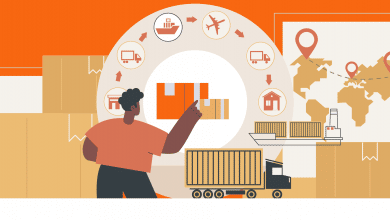Andy Jassy Confirms Everyone’s Greatest AI Fears
Amazon’s latest PR release paints a glowing picture of an AI-powered future—smarter Alexa, faster fulfillment, personalized shopping, and over 1,000 generative AI applications in the pipeline. But buried among the optimism is a quieter, more sobering shift: AI won’t just change how Amazon works—it will change who works there.
Efficiency Gains = Fewer People
CEO Andy Jassy didn’t sugarcoat it: as AI becomes more embedded in Amazon’s operations, “we will need fewer people doing some of the jobs that are being done today.” This isn’t speculative—it's a strategic signal. From customer service to inventory planning, generative AI is being used to automate core tasks that once relied on human decision-making.
This isn’t new for tech giants, but it is rare to see such a candid acknowledgment. For a company that employs over a million globally, even a small percentage shift in headcount could mean tens of thousands of roles disappearing or evolving dramatically.
Where Will the Cuts Hit?
Amazon hasn’t detailed exactly which roles are on the chopping block, but based on the release and outside reporting, the first wave seems targeted at:
- Corporate functions: AI agents are being deployed in marketing, operations, and software development—areas where automation can replace repetitive tasks.
- Customer support: A rebuilt AI chatbot is now handling more interactions with better performance, meaning fewer live agents.
- Supply chain & forecasting: Generative AI is already being used to optimize inventory placement and demand prediction, streamlining roles once handled manually.
According to recent reports, employees are already reacting with concern, particularly around a lack of clarity and transparency about which teams will be affected and when.
The Upside: Reskilling and Repositioning
It’s not all bleak. Jassy emphasizes that while some roles will disappear, others will emerge. Amazon is encouraging employees to “educate yourself, attend workshops and take trainings” in AI. The company sees a future where leaner teams are supported by intelligent agents—reducing busywork and allowing humans to focus on higher-level strategy and innovation.
There’s precedent for this. In previous tech transitions, companies that invested in internal upskilling were better positioned to retain talent and innovate faster. If Amazon follows through on this commitment, it could turn a disruptive moment into a competitive advantage.
Conclusion
Amazon’s AI investment is undeniably impressive—from personalized shopping tools to the $4B bet on Anthropic. But the real story isn’t just about smarter assistants or better ads—it’s about workforce transformation. Automation is reshaping Amazon’s internal operations, and yes, reducing headcount in the process.
Whether this becomes a story of mass layoffs or mass reskilling depends on execution. As always with AI, the tech is only half the story. The people part will define the long-term impact.



